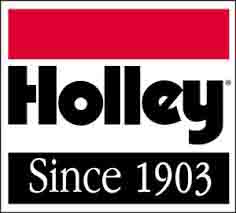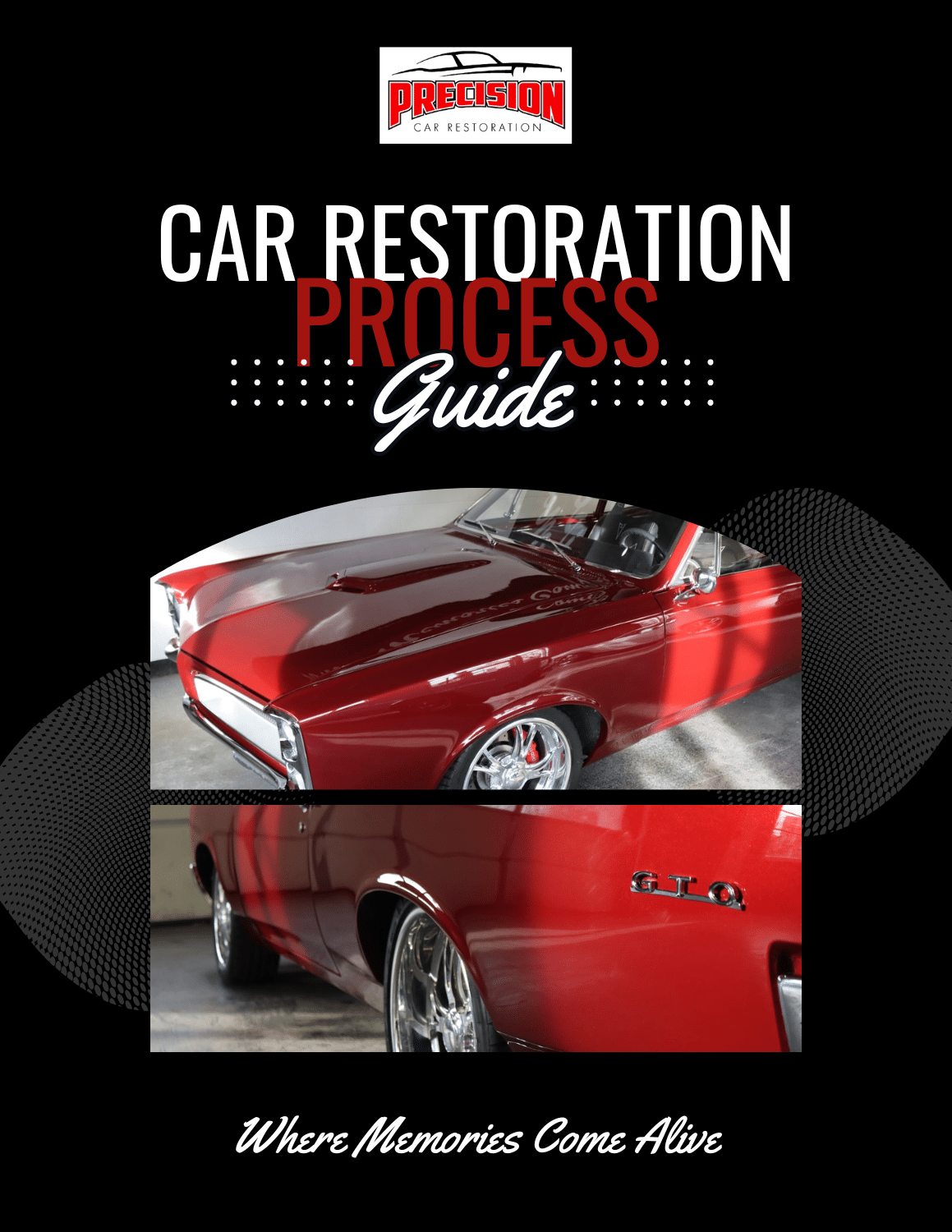We have discussed the different ways air flow as well as ignition will affect the way your engine will perform and how these systems work in conjunction with whatever you choose for a fuel delivery system for your project. Now that those items have been addressed we can look deeper into the various carburetion and injection options available for you. While there are several manufacturers of aftermarket injection systems we will concentrate on those offered by Edelbrock and Holley. These are two well respected, well known companies and, as I stated in the previous post, while other companies may offer systems that would work with your car you need to proceed with caution. If you experience issues with installation, or even problems down the road with operation you need a resource you can count on to help resolve these concerns. Another thing to consider is if the other company developed their system or if they have created a system based on a conglomeration of other systems to form the one. You can research it if you wish but Holley and Edelbrock have developed their systems on their own, from the ground up and have continually improved their products for reliability and performance purposes. They were also innovators in this field, they realized early on the increase in performance and efficiency their customers could realize through fuel injection and, while they do compete with each other, they do have a certain amount of respect for what each has done. Obviously the choice is, and should always be, yours. I just want to help provide information that will aid in making an informed decision based on your needs.
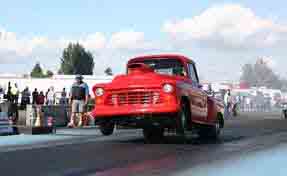
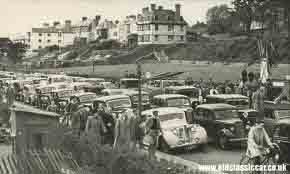


So you have taken the time to think about how you plan to use your vehicle when you’re finished, maybe it will be a daily driver, maybe you’re looking for something you may want to road race on the weekends at the local track , maybe your interest is in how fast you can go a ¼ mile at a time. One of the greatest advantages you have with a fuel injection system is the ability to make easy, quick adjustments to the tuning aspect of fuel delivery. Back in the day I became very adept at switching the jets out on my Holley carburetors so that before leaving the track I could get on the highway and expect a little better fuel economy. While this was, and still is, as relatively easy task it can become a real drag and will eventually cause sealing issues with your carburetor, believe me, I know. With the fuel injection systems now, throttle body or port, adjustments are simple and quick, break out the controller and set the fuel trim where you want it. The added bonus is that the adjustment is nearly limitless, unlike having to choose between one size jet or another, very minor adjustments can be made to get the results you desire. Many electronic ignition systems allow this same type of tuning to your ignition timing as well, through a combination of timing and fuel trim adjustments you can expect a totally different level of performance between the track and the road with nothing more than a few minutes of your time adjusting the tune to your engine. Many systems have the option to store settings that will allow you to make quick adjustments with only a few clicks. We sure have come a long way.

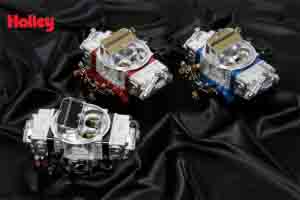
Carburetors are, in essence, a very basic piece of equipment. That is not to say that to have them work correctly is not an engineering feat or requires a certain amount of knowledge to tune them correctly. A carburetor works off of vacuum, as the engine sucks air through the throat, or venture, of the carburetor fuel is siphoned from the float bowl, through the jets and mixed into the air and delivered through the manifold. Along with choices in the size of the jets great care is taken by manufacturers to design an effective venturi for the fuel to mix with the air creating an “atmosphere” of fuel and air inside the manifold. In order for fuel to combust effectively it must be atomized and easily vaporized once it enters the combustion chamber. Builders have used various methods through the years to improve the atomization of the fuel like doing work on heads and intake manifolds to match the ports to reduce the turbulence encountered when entering the combustion chamber, swirling the intake and combustion chambers to create better mixing of the fuel and the air. High rise intake manifolds improve this action by creating more of a tunnel for the air and fuel to swirl and mix.
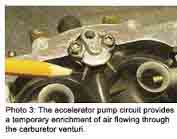
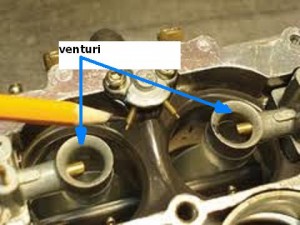
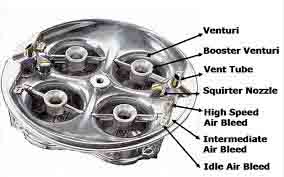
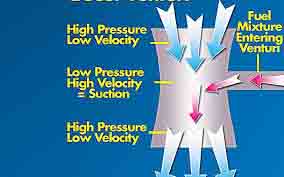
Carburetors also use a very basic cylinder and plunger, called an accelerator pump, to start the engine and start the flow of air through the venturi. After the engine is running the engine will still get a squirt of fuel on acceleration, hence, one of the inefficiencies of a carburetor. At idle the carburetor uses air bleeds inside the carburetor to properly mix the air and maintain idle, this adjustment is one of the most critical to performance. Adjusting the air/fuel mixture screws not only help the carburetor maintain idle it also keeps the system at the ready for acceleration. One of the greatest draw backs of a carburetor is that on deceleration you still have a considerable amount of fuel flowing through the carburetor into the engine. This is one of the primary contributors to lower fuel economy and higher emissions.
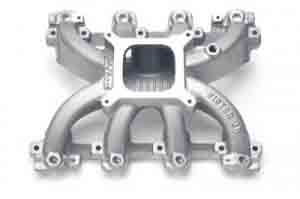
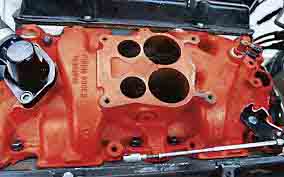


NASCAR still uses carburetors, there are rules designed to keep the power, and therefore the speed, down. Use of restriction plates on the intake manifold reduce the overall volume of air allowed into the cylinders and, as a result, only so much fuel can be mixed to maintain the 14:1 air/fuel ratio. We discussed air intake systems in the previous blog and we mentioned the use of high rise manifolds earlier in this post but we haven’t discussed the different types of manifold openings that allow the air into the engine. Many factory manifolds will have individual portals that perform the same function as the restrictor plates used in NASCAR. Reducing the amount of air and fuel will reduce the power but the manufacturers used it to reduce emissions while still providing some degree of performance. You will see these independent ports on two barrel as well as four barrel intakes. Based on your choice there are aftermarket intake manifolds that will still have these individual ported openings, a complete full opening to match the carburetor and some will have a split port. Some of these split port style intake manifolds will be of a dual plane design which aid in providing equal amounts of mixture to each cylinder, a concern manufacturers, both factory and aftermarket, have been working with for years. The choice of your intake manifold is just as important as your choice of fuel delivery system, carburetors as well as Throttle Body/Central Fuel injection systems are capable of using the same manifold which is where your decision on how much fuel you will require to obtain the power you desire will determine which T.B.I./C.F.I. system or carburetor you need to equip your engine with.

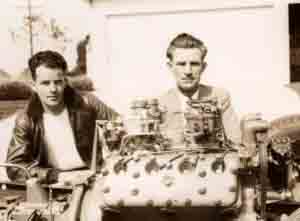
You may have heard of the various Electronic Fuel Injection (EFI) systems such as throttle body, Central Fuel Injection and port injection but you may still be confused on how each one would benefit you and your driving experience. The first, and still one of the most popular injection systems is a Throttle Body Injection (TBI) system. Sometimes called a Central Fuel Injection (CFI) system this system is essentially what started the modern drive to fuel injection. In the early eighties the car manufacturers were beginning to work on electronic fuel injection systems, mechanical systems had been used before, even some ’57 Chevy’s were fuel injected as well as many early Corvettes, Ford and even Chrysler had all experimented with fuel injection but they knew, collectively, that the best way to operate a fuel injection system would be electronically. Stuart Hilborn, who passsed away this last December, was among the first, if not the first, to introduce a viable fuel injection system to be used on performance engines. His systems quickly gained popularity with the hot rod classes even before Detroit began to tinker with the viability of injection. Written by Daniel Strohl, there is a very nicely written eulogy of Mr. Hilborn on the Hemmings website blog that celebrates his life, accomplishments and contributions to the automotive world. Check it out here. Rochester worked closely with Chevrolet and succeeded in developing the systems used on early Corvettes and other Chevy models. There is a very good outline posted on the ebscohost website, that outlines the operation of these early Rochester systems and can be read here. The mechanical systems worked reasonably well but were difficult to tune correctly and, due to the complexity of the designs, were prone to failures that were difficult to diagnose and repair. Yeah, I know, sounds a lot like the modern electronic fuel systems, complex and difficult to repair at times but the initial mechanical systems pioneered what we have now and taught all of us some lessons about their use and what fuel injection was capable of. Much like the initial Lunar launches that used huge computers for operating systems that could now easily fit into most smart phones the early injection systems were at a technological threshold where the science had not yet been developed to take it beyond what it was designed for. We do have the car industry, and I will also credit the EPA and their ridiculous restrictions, to thank for the personal computers we use today. Had it not been for the automotive industry putting computers into cars and outside of the cozy climate controlled environment they were used too we would be far behind in the development of lap tops and home computers. Not many years ago Computers were confined to climate controlled areas that used highly filtered air and were rather finicky, Car manufacturers needed ways to control air/fuel systems and started putting small computers on cars that operated in cold climates, warm climates, wet, rough, you name it, it was a foreign land for computers. Thanks to the automotive industry we were able to reduce the overall size of computer operating systems and took them out of their protected environment, exposing them to dust, different climates and rough handling.
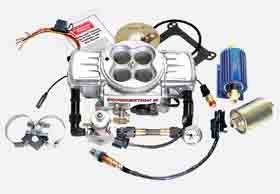
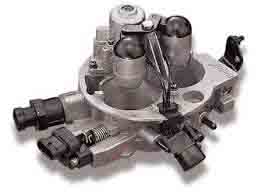
The TBI systems that started the movement to fuel injected vehicles and the early computer systems the manufacturers developed did have issues, I can tell you from experience that in the eighties no one could fix anything. The engineers developed operating systems that had very little diagnostic capabilities and when something did fail the engineers didn’t know how to fix them. Technicians working on these early systems were frustrated and the manufacturers listened and steadily improved diagnostic methods, programmed more diagnostic routines into the system and eventually produced pretty reliable systems. In the meantime the aftermarket companies, Edelbrock and Holley, began working on their systems and in many ways set an example for the manufacturers. These early systems from Holley and Edelbrock far exceeded the performance of systems the manufacturers developed. the manufacturers, however, weren’t concentrating on performance as they were attempting to meet heightened emission regulations. The advantage of a TBI or a CFI, whatever you are most comfortable calling it, is that in most cases it can be bolted directly in place of your carburetor. You will still have some modifications to include the components that are needed to operate the system, oxygen sensors, air density and altitude sensors but when you get to the bare bones of the system it can easily be added to an engine that you would like to maintain a stock appearance on. With most systems the factory air cleaner can be used with little or no alteration. The TBI systems can range from a throttle body with a single injector all the way to four individual injectors. Flow of fuel in any injection system is controlled by two things, injector pulse width, the amount of time the injector is “on”, and the size of the nozzle on the injector. Matching the size of the injector to the needs of the engine and availability of air is important, another reason why using a reputable company such as Holley or Edelbrock is important. These two companies will assist you in making sure the system you choose will meet your needs, what you need is not always the most expensive, it isn’t an upsell they are seeking, they want you to have what you need based on your driving habits, what the vehicle will be used for and what your performance expectations are. Having a high flowing system designed for an engine that is to be raced will not work on a street car, having a higher volume system on an engine that is primarily being converted for fuel efficiency is also a poor choice.
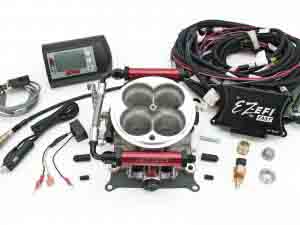
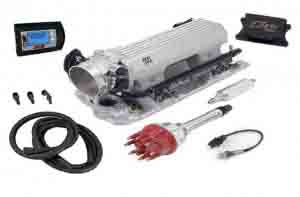
The same considerations are true for port fuel injected vehicles. Port fuel injection systems are nothing particularly new and the applications offered by the aftermarket seems to grow daily. While there are several differences between port injection and CFI the primary difference is that with port injection each cylinder is equipped with its own injector. The injector, placed in the intake manifold at each cylinder port, atomizes the fuel closer to the combustion chamber so that air/fuel mixture can be micro managed for optimum performance from each cylinder. The type of injection system and the choices you are faced with are the same as a TBI/CFI system, fuel trim and the size of the nozzle still determine performance. The intake manifold is also much different than that of a carbureted or TBI system, typically these intake manifolds will have an “air box” so that a large volume of air can be stored to prevent an over enrichment situation on hard acceleration. Air is controlled through a throttle body, actuated by the accelerator cable, this is another item that needs to be matched to expected performance. When operating a fuel injection system the driver only controls the air going into the engine, the days when we “mashed on the gas” are over when we convert. When we push down on the accelerator pedal on a fuel injected vehicle we allow air into the engine, the electronics of the injection system read throttle angle, how fast we pushed down on the throttle, what speed we are doing, engine temperature, what our altitude is relative to sea level ( to measure the amount of oxygen in the air being ingested), and how dense the air is (hot humid air is less dense than cool dry air), all of these, along with readings obtained by the oxygen sensors, provide the input for the fuel injectors to deliver the proper amount of fuel based on the air entering the intake and combustion chambers.
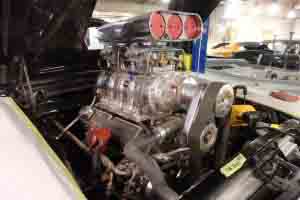
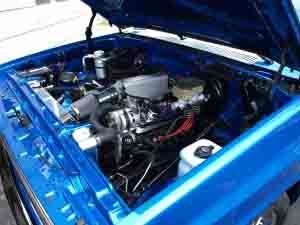
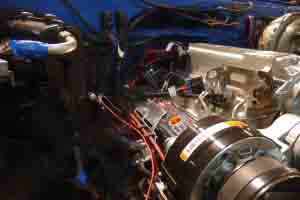
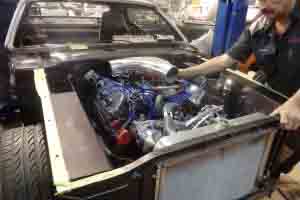
Whatever you choose, take the time to research your options, just like any other component of your vehicle, if a wrong decision is made it can, in most cases, be corrected but corrections take time and money and really put a damper on your excitement level. Look at your car as whole and then break down the individual systems so that they will work together. Any project provides you with the opportunity to “engineer” the perfect vehicle for you, take advantage of that freedom, use the experts as a sounding board and get their input before incorporating the change, this goes for steering, suspension, powertrain options, etc., the options are limitless and there is no need to feel disappointed in your accomplishment when everything is done and your cruising down the road, launching off the line for that quarter mile run or entering the curve at your local road race event.


